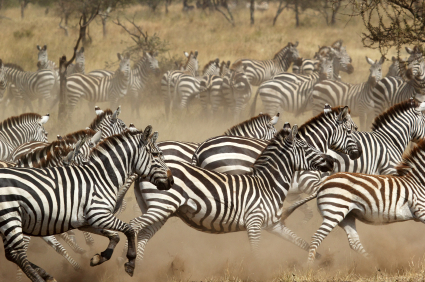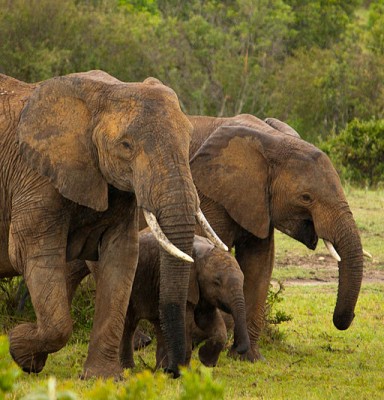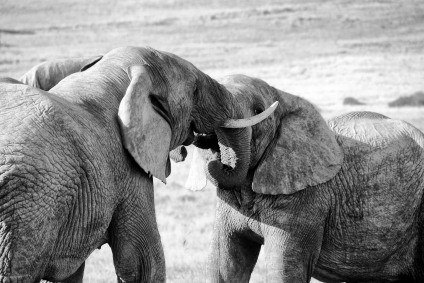Trauma 101: Physiology & Causes of PTSD

This post discusses the causes of PTSD and the “defense cascade” of fight, flight and freeze — often described as the basic mechanism of the mammalian response to trauma.
As discussed in future posts, understanding the basic biology of trauma has tremendous consequences for conflict resolution and spirituality in addition to its importance for recovery from trauma and healing PTSD.
The work of Levine, Porges, Cannon and Schauer and Elbert will inform this discussion.
CAVEAT: If you find contemplating the details of trauma potentially upsetting, even in the abstract, please look away, and consider seeking a practitioner for help.
Neuroception: Are You Friend or Foe?

As Stephen Porges, Ph.D., has noted, “the perception of safety is the turning point in the development of relationships for most mammals.” (Porges, 2011, p. 175).
Porges has coined the term “neuroception” to describe the process by which neural circuits distinguish whether situations or people are safe, dangerous, or life threatening. (Porges, 2011, p. 11). This process is continual but takes place outside of awareness in primitive parts of the brain.
Porges’ work indicates, in other words, that whether we like it or not, the body will respond with a threat or challenge response in situations in which we do not feel safe.
This is also borne out by recent work on the amygdala and the way the brain/nervous system responds rapidly to potentially dangerous faces and situations.
Tend and Befriend: Are There Gendered Responses to Trauma?

Photo: Siddharth Maheshwari
Recent research also suggests that in addition to fight, flight and freeze, our basic responses may also include a “tend and befriend” response — a tendency to protect offspring by affiliating with others in one’s group for mutual defense. This response is said to be characteristic of women. (Taylor, 2000, 2012).
This raises the fascinating possibility that defensive responses to threat may be gendered, at least in part. This will be dealt with in depth in other posts. For now, we return to the basic physiology of fight, flight and freeze.
The Orienting Response: Stop-Look-Listen

In response to the threat of danger, the animal orients, that is, it stops and turns to the source of the danger. This “stop-look and listen” response allows the animal to shift resources to those perceptual and executive functions that will allow it to assess the danger and escape.
Fight or Flight: Responding to the Threat

After this “stop-look-listen” stage, the animal, having calculated the danger and the best means of escape, will generally flee.
However, when flight is not successful or possible, the body prepares to fight or counterstrike. During fight or flight, the adrenals and the sympathetic nervous system are triggered. Physical responses include:
- The heart beats quickly and blood pressure rises.
- Blood vessels to the skin and certain other organs constrict. This increases blood supply to the heart while reducing it in peripheral organs. As a result, the potential for blood loss in the event of injury is reduced.
- The breathing becomes hurried, faster and deeper. This allows more oxygen to reach muscles and cools the body.
- Sweating increases. The palms become moist, allowing a better grip if necessary.
- The body’s natural pain killers, endorphins, are released. Somatosensory perception and awareness is decreased.
Scared Stiff: The Freeze Response and Tonic Immobility
When the animal cannot escape or remove the threat by fighting, the freeze response, sometimes described as “fright,” “being “scared stiff” or “frozen by fear,” sets in. The skeletal muscles tense. While the animal appears dead, internally it is alert. This is, in effect, a paralyzed conscious state.
From the point of view of physiology, the sympathetic nervous system’s antagonist, the parasympathetic nervous system, has become activated and counteracts the sympathetic activation.

To use a commonly used metaphor, it is as if the organism has one foot on a gas pedal (the sympathetic nervous system) and one foot on the brake (the parasympathetic nervous system) at the same time. The result is a contradictory state of “dual activation” and paralysis.
The Evolutionary Value of Freezing or Playing Dead
There is an evolutionary value to freezing, to, in effect, “playing dead.” Among other things, some predators will lose interest at that point, or leave the scene briefly to find their offspring to join them in the meal.
The freeze response can be seen in the following video:
Note that in this situation, the gazelle was able to rapidly unfreeze and flee once the predator moved away. The rapid onset, and potentially rapid termination of the freeze, is what distinguishes it from the next phase.
Shutdown & Collapse: Flaccid Immobility
The “shut-down” stage is dominated by the inhibition of the sympathetic nervous by the parasympathetic system. The “brake” is in full throttle. There is a drop in heart rate, vasodilation and a drop in blood pressure. The tendency to dissociation has been attributed to this extreme form of defense. (Schauer & Elbert, 2010).
Paths to Healing
According to Peter Levine, trauma symptoms are caused when immobility is coupled with fear and other strong negative affects. (Levine, 2010, p. 58). In his approach to healing trauma (Somatic Experiencing), healing occurs when the fear is uncoupled from the immobility. (Levine, 2010, p. 68).
Levine’s approach emphasizes working through and with the body. Other approaches emphasize more cognitive, “top-down” approaches.
The essence of resolution is always the recovery of the ability to stay in the here-and-now without being trapped by traumatic memories or feelings. (Compare Schauer and Elbert, 2010, p. 121, and Levine, 2011, for example).
References
Cannon, W. B. (1914). The emergency function of the adrenal medulla in pain and the major emotions. American Journal of Physiology–Legacy Content, 33(2), 356-372.
Levine, P. A. (2010). In an unspoken voice: How the body releases trauma and restores goodness. North Atlantic Books.
Porges, S. W. (2011). The Polyvagal Theory: Neurophysiological Foundations of Emotions, Attachment, Communication, and Self-regulation (Norton Series on Interpersonal Neurobiology). WW Norton & Company.
Schauer, M., & Elbert, T. (2010). Dissociation following traumatic stress. Zeitschrift für Psychologie/Journal of Psychology, 218(2), 109-127. DOI: 10.1027/0044-3409/a000018.
Taylor, S. E., Klein, L. C., Lewis, B. P., Gruenewald, T. L., Gurung, R. A., & Updegraff, J. A. (2000). Biobehavioral responses to stress in females: tend-and-befriend, not fight-or-flight. Psychological review, 107(3), 411.
Taylor, S.E.(2012). In Van Lange. In Kruglanski and Huggins, E. T. (2012) Handbook of Theories of Social Psychology, Vol. 1., 32-39.
Note: The terminology differs in different authors. In this post, the terminology used generally but not always follows Levine (2010).


November 5, 2013 @ 9:00 am
Thank you so much for your feedback Ellen, and your perspective as a practitioner. I think that is an excellent idea, and will try to work on how to add that to the blog (any help would be welcome!). EEB
November 4, 2013 @ 2:15 pm
Hi Elizabeth, I found your blog post very accessible and comprehensive. As a practitioner, I would welcome more explanation and description about S.E.’s treatment and especially “uncoupling”.
Thanks So Much,
Ellen Peskin Baum
November 1, 2013 @ 1:15 am
I really enjoyed this blog thank you. I’ll send it to the students on the training here in Ireland
November 1, 2013 @ 12:21 pm
Thank you so much Brid. I am honored and pleased that this work could be of service…I hope you and your students will feel free to contribute or send comments if that feels right at any time…Elizabeth